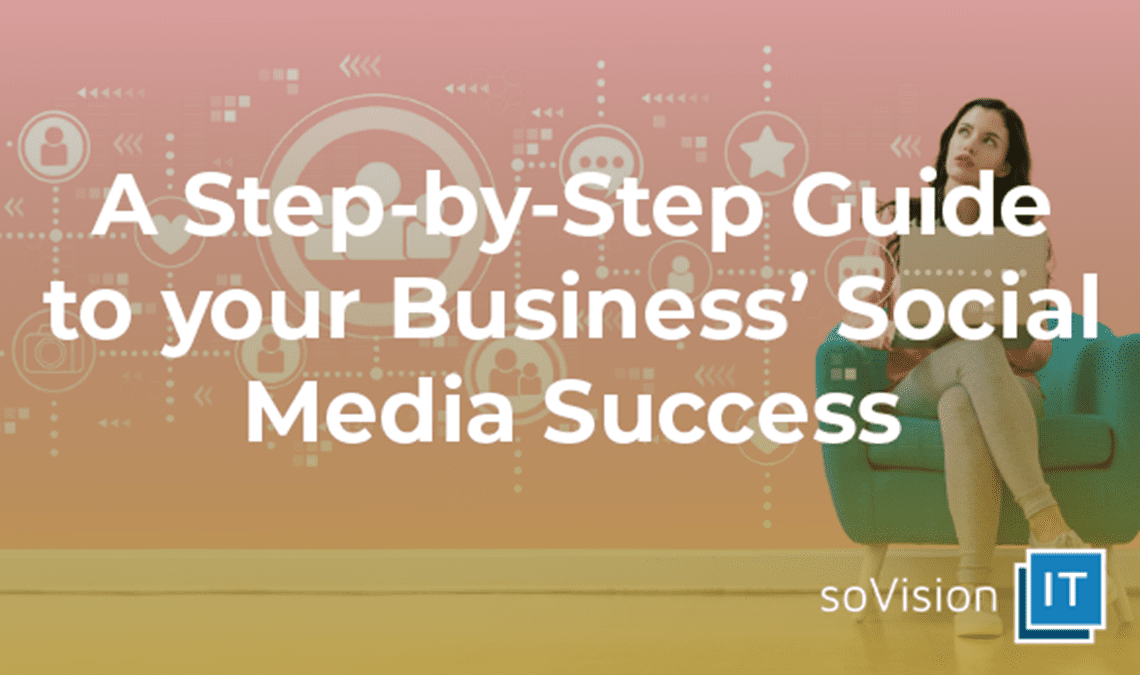A Step-by-Step Guide to Your Business’ Social Media Success
First, what is social media marketing for businesses?
Social Media management businesses represents a process of growing the awareness of your brand, and the products or services that you offer. The ultimate goal of any social media marketing campaign is to generate website traffic, gain brand/ product/ services visibility, increase the number of social media followers, and the number of your clients. Some of the most popular social media networks are: Facebook, Twitter, Google+, Pinterest, LinkedIn, YouTube and Tumblr.
Why is social media marketing so important for your business?
- Social Media management services for small businesses is one of the fastest ways to spread the word about your brand, products and services, or sharing a news story. Any information that you want can be seen by thousands of people in seconds, just like you were to use other traditional media like television.
- Social Media marketing is also a modern trend, because millions of people spend a great amount of time on these social media networks.
There are 32 million people in the UK using Facebook, 17.2 million using Instagram, 16.4 million using Twitter and 21 million using LinkedIn (sources: We are Flint, Statista). The Samsung Time of our Lives report conducted by the social psychologist Dr. Becky Spellman highlighted that people in the UK under-40s spend an average of one hour and 47 minutes a day updating social media in comparison to 40 minutes spent by the over 65s. If you need to reach more people, you definitely know where to find them.
- Social Media is a relatively new market. Long time ago, sellers of certain products have learned that many people spend their time driving cars, so they thought to mount billboards on the roads. Today, people spend time on various social media networks, therefore you need to start being active on social media in order to advertise and sale your products and services.
- Social Media is the new influencer. Many studies show that social media is becoming a real business, as several companies have confirmed that many of their clients have been found on Facebook or Twitter.
Social Media Marketing Tips for Start-ups:
How can you and your business benefit from social media? How can start-ups build quickly and suitable social media presence? You will find the answers to these questions in the following line.
1. Decide which social media platforms are you going to use
Being a business new to social media, you need to choose one or two social media platforms and focus on them, rather than trying to work on all possible platforms at the same time. Unfortunately, this is a frequent mistake many start-ups do, and in the end it will not bring any expected benefit.
A successful way to find out which platform suits your niche best is to find out who are the influencers in your industry and see on which social media networks are they present and active. Once you found their social accounts, check the number of fans they have on Facebook, Twitter, Google+, and so on. If they have 100k fans on Facebook, but only 10k on Twitter, then this is a good sign that you will find your target market easier on Facebook than on Twitter. Now you know your brand has bigger chances of success on Facebook and you can use your time more effectively.
2. Create and optimise your social media accounts
Once you have decided what social media platforms you will use, the next step is to create and optimise your social media management business profiles. On LinkedIn, Instagram and Facebook you can create business pages that are different than the personal profiles, but on Twitter all profiles are the same. Many companies are skipping the much needed process of optimising their social media accounts without being aware that it will significantly increase their chances of getting more followers. Furthermore, optimising your business pages is also an excellent way to boost your SEO efforts.
Here are some tips that apply to all social media accounts:
- Use a professional image that has your brand’s logo for your profile picture. Avoid using photos that you would use on your personal profile.
- Social media is all about establishing relationships with people and it would be easier for your niche to relate to your brand if you have a profile picture with the company’s founder or a person that represents the brand.
- Make an excellent description of your brand and be consistent across all your social media accounts and your website. What is your expertise? What can you be proud of? Mention all these on your social page.
- Give a short indication of what type of information your followers will find on your social media account. Although this is not necessary, many people like to know what kind of information they are offered. For example, you can specify in your profile something like this: “social media marketing tips and advice”.
- Include a link to your website. On Facebook, you can include it in the “About” section, on Twitter, Instagram, Pinterest and LinkedIn in the “Website” section etc. In other words, use your social media accounts for SEO purposes as well.
3. Link your site and/or blog to social media pages
After creating and optimising your social accounts, the next step is to connect your own website and/or blog to your social media pages. There is a certain procedure to follow for each platform and it is very important to do it correctly. The right correlation between the two implies that search engines and social media know how to connect a website to its corresponding social media pages.
4. Add social media buttons to your site
In addition to linking your site, your web developer should be able to insert social media icons and links on your website. Recommendation: insert them somewhere visible like the top of the page. For the blog section, having social sharing buttons at the end of each article will enable your readers to share the article on their profiles and therefore attract new website visitors, increase traffic and brand awareness.
5. Find and follow the influencers in your industry
So far, you have selected the most appropriate social media platforms for your target market, you optimised them, linked them to your website and added social buttons for greater interaction. The next step is to identify the people or companies you want to be followed by on social media and gradually build your tribe of followers.
There are five basic steps to take in order to get as many followers as you can. The steps are described in the points 6-10 below, but before moving on to this, you first need to identify and follow the influencers in your industry.
It’s very probable that they will not follow you back because you have a new account with no followers, but connecting with them can facilitate the process of gaining new followers for your account. At the same time you get important and helpful information in your industry.
6. Keep a balance between the number of accounts you follow and your followers with the help from a reliable social media management business
Once you start to follow certain people and organisations on social media, you need to remember to keep a balance between the number of people you follow and the number of your followers. This is important on platforms like Twitter, Google+, or Pinterest, and the reasons are many:
- These networks use the following/ followers reports to make suggestions to people on “who to follow”, so if you have a balanced report then you will maximise the chances of getting new quality followers.
- It is a matter of trust. Who do you think has a trusted profile: someone with 1k followers, but who is following 3k people or someone who has 550 followers and is following a number of 510 accounts?
- A balanced profile is useful for SEO as well.
7. Share interesting content (text, images, and video)
This is the foundation of having a successful social media account for your business. All the published content has to be interesting and relevant for your industry and followers. If you share useful and attractive content, you can get more shares, followers and, under certain conditions, more customers.
What is an interesting piece of content? It can be a combination of relevant articles, stories, and pages from your website, interesting statistics, motivational quotes or certain research studies. Try to visually engage your audience by adding images and videos to the written content. Funny posts are more than welcome, but only if they are relevant to your industry and audience, and are in line with your brand.
8. Post several times a day, but without exaggerating
A common question that many businesses ask is “How many times per day should I publish a post?”. The answer depends on the social network that you use. Here are some good practices to take into consideration based on several studies that analyse the impact of posting frequency on social media:
- On your new Facebook business page you should post one or fewer times per day. Once you have more than 10k followers, you can start posting 1-2 times per day (source: HubSpot).
- On Twitter you can post up to 3 times per day as the engagement begins dropping after this number of tweets (source: Social Bakers).
- On your Instagram business account, the optimal number of posts is 1.5 per day (source: Union Metrics).
- By posting 1 update per day during work week on LinkedIn, you will reach at least 60% of your audience (source: LinkedIn Small Business).
- On Pinterest it’s best to pin 3 or more times per day (source: Piqora).
9. Do not forget to follow back
Most people are focusing so much on getting new followers that they forget to follow back the people and companies that followed them. You have to check regularly who followed you and return them the “favour”. If you don’t do this, it’s very likely that some of them will decide to unfollow you, generating a decrease in the number of your followers.
10. Follow these steps and be patient
Social media networks have rules to keep spammers away. For example, there is a limited number of accounts you can follow per day on Twitter. There is also a limited number of people you can add or delete from your circles on Google+, Facebook has its own its rules, and the list can go on.
This means that it will take some time to get thousands of fans/ followers, so you will have to be patient and persistent. Do not try to hurry up the process by breaking the rules because your account can be suspended or by spending money on “buying fans”. Try instead to invest your time into creating an extraordinary social media management business page that will last for a long time and that can become one of the leading social pages in your industry.

